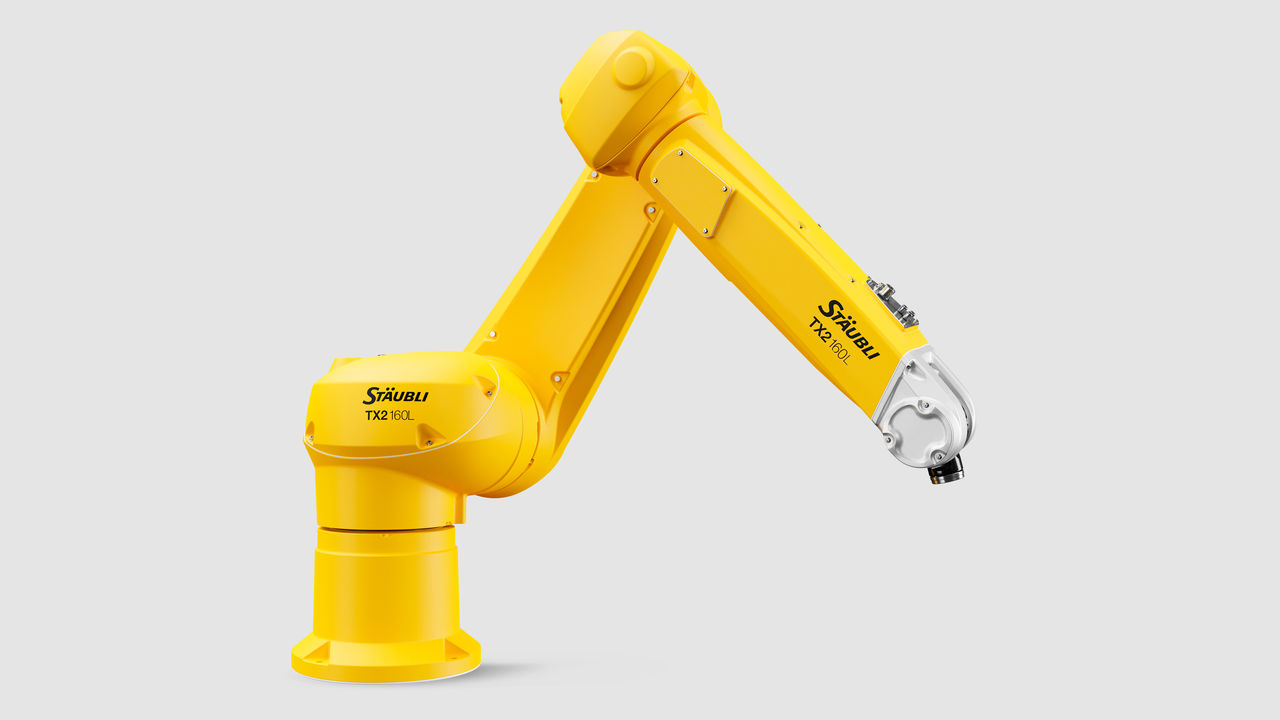- Europe
- Americas
- Asia and Middle East
- Africa and Oceania
SUCCESS STORY
A welding robot for two cells
A supplier that manufactures custom components in small to medium quantities has made exactly the right choice with a Stäubli robot. Thanks to a linear axis, the laser welding robot can work in two cells and drive maximum productivity.
CUSTOMER BENEFITS
- Increased productivity through the use of robots
- Minimized setup time: one robot for two welding cells
- High quality of weld seams
- Maximum flexibility
- Simple robot programming
- Robot controller acts as system control
TASK
Automated welding of various components
Italian subcontractor T.P.A. in Brendola, Italy relies on a fully automated robotic cell with a Stäubli six-axis robot that works in two cells equipped with rotary tables. To achieve this, T.P.A. called on laser welding specialist L-Peak, who selected TX2-160L for its ideal versatility and accuracy combination. The result: the highest productivity and flexibility – and perfect weld seams.
T.P.A. is a specialized subcontractor primarily serving manufacturers of heating and cooling systems. It provides custom components such as pipe heat exchangers, which are delivered ready for installation with connections, valves, and housings on request. This means that many different products must be manufactured, and many processes mastered. Flexibility is mandatory and the highest productivity is crucial.
Given these requirements, the company wanted to make a leap in productivity and integrate laser welding into its process portfolio. As Managing Director Renato Cervellin explains, “We wanted a versatile and efficient system suitable for welding components of very different shapes and sizes, and we were confident that only a highly automated robot-based laser welding system could meet this requirement.” For this project, T.P.A. turned to L-Peak, a manufacturer with extensive experience in the application of laser technologies.
SOLUTION
A six-axis robot with an additional linear axis
T.P.A. approached L-Peak with the idea of a welding robot capable of working in two independent cells. The advantage of this concept is clear: While the robot is welding in one cell, the next workpiece can be set up in the other, maximizing productivity.
L-Peak decided to collaborate with Stäubli Italy on the project and use a six-axis TX2-160L (“long reach”) robot equipped with a powerful, high-quality laser welding head.
Why Stäubli? According to Stefano Dalla Vecchia, Managing Director of L-Peak, “Stäubli is a premium brand in the world of robotics. Our goal is to compete with the premium providers in our market, so we also use premium core components.” Other reasons for choosing Stäubli were the robot’s precision and long reach. “With its long arm, the robot is able to move the laser head around the workpiece with excellent precision and repeatability. This is crucial for ensuring a repeatable and efficient laser welding process with perfect weld seams,” Dalla Vecchia adds.
CUSTOMER USAGE
Productivity and flexibility at the highest level
The automation system with the “one welding robot, two cells” concept is now installed and operational in T.P.A.’s production and fully meets the operator's expectations. Renato Cervellin: “We achieved a significant increase in speed compared to traditional welding, and the robot’s precise path control results in cleaner and more consistent weld seams. Even with long weld seams, the workpiece does not warp.”
In addition, programming the robot is very simple. It is done on-site, directly on the workpiece, with the help of an integrated joystick and PC. The fact that the robot cells do not need a PLC since they are controlled by the robot controller makes programming even easier and increases flexibility.
There is yet another innovative design feature. The L-Peak engineers installed a door in the partition between the two cells, literally opening up the possibility for welding on very long tubes and profiles. “This is a truly special layout that increases flexibility and allows for short setup times,” says Cervellin.

